Sponsored content
Croatia's islands are like pearls on a necklace strung along the shoreline of the country's Adriatic Sea coast. Untouched nature, warm weather, incredible views, engaging culture, and a deep-rooted history all combine to make the Croatian islands one of the top destinations for travellers wishing to explore this corner of Europe.
Croatia's southern islands of Korčula, Lastovo and Mljet and the nearby Pelješac peninsula will seduce you with their fascinating cultural heritage and beautiful nature and fill your holidays with a wide range of outdoor activities, such as biking, hiking, kayaking, scuba diving, sailing and windsurfing.
Add in the jewel of the Croatian crown, Dubrovnik, a unique medieval city surrounded by iconic city walls and recognised by UNESCO as a World Heritage Site, and you've got a recipe for exploration and adventure that's a magnet for international tourists.
Why take an adventure holiday in Croatia?
Croatia has soared in popularity as a travel destination because of its Mediterranean location, cultural heritage, mild climate, diverse landscape, and natural wonders. It's also a cheaper place to visit than many western European countries.
A Croatia island hopping holiday is one of the best ways to experience the many attractions of the area - one ideal combination for an active visit here would be to cycle the biking routes on Korčula island, explore the Pelješac hiking routes with the most beautiful panoramic views, view the night sky from Lastovo and trek the Mljet National Park hiking trails on Croatia's greenest island.

Where are the islands of Dubrovnik and Neretva County?
The three islands of Korčula, Lastovo and Mljet, and the Pelješac peninsula - virtually an island itself as it's joined to the coast by a slim strip of land - are located between the cities of Split and Dubrovnik on Croatia's southern Dalmatian coast.
The gateway airports of Split and Dubrovnik are reached by flights from the UK, with several UK carriers. Flight time is around 3hrs.
There are regular ferry services from Split and Dubrovnik to the islands; ferries to Korčula, for example, depart regularly from the port of Dubrovnik. It's worth noting that the ferry port is located in the Gruž suburb and is roughly a 30-minute walk to the historic centre of Dubrovnik. The journey time to Korčula is around 2hrs. There is also a ferry link from Orebić, the main town on the Pelješac peninsula, to Korčula. This runs 15 times a day during high season, and the journey takes just 15 minutes. The Dubrovnik-Mljet ferry runs daily and takes 90 minutes.
You can reach Lastovo from Split and from Vela Luka on Korčula; the ferry from Split takes about five hours, a catamaran just three hours. During July and august there is also a catamaran service from Dubrovnik.
Many tour operators or excursion operators also run island-hopping holiday packages and cruises.
Highlights of the Dubrovnik and Neretva County islands
If you are looking for adrenalin-fuelled activities, sailing, kitesurfing, diving or kayaking are the choice for you. For beginners, there are diving and sailing schools and local guides have created unique tours from day trips to longer cruises to bring you near to the tradition and lifestyle of the islanders. Island hopping holidays are especially popular, while nature lovers and anyone passionate about historic sites will find the Croatian islands are the perfect destination.
On the mainland, the red-roofed city of Dubrovnik has enchanted visitors for centuries, and a walking tour of Dubrovnik old town is a must-do of any day trip, as is the cable car ride up to Mount Srd, the mountain that rises up above the city. As the setting for the fictional city of King's Landing in the TV series Game of Thrones, it also attracts visitors eager to see some of their favourite locations.
Island hopping in Croatia
Here's a rundown of the main islands - and peninsula - that make up Dubrovnik and Neretva County:
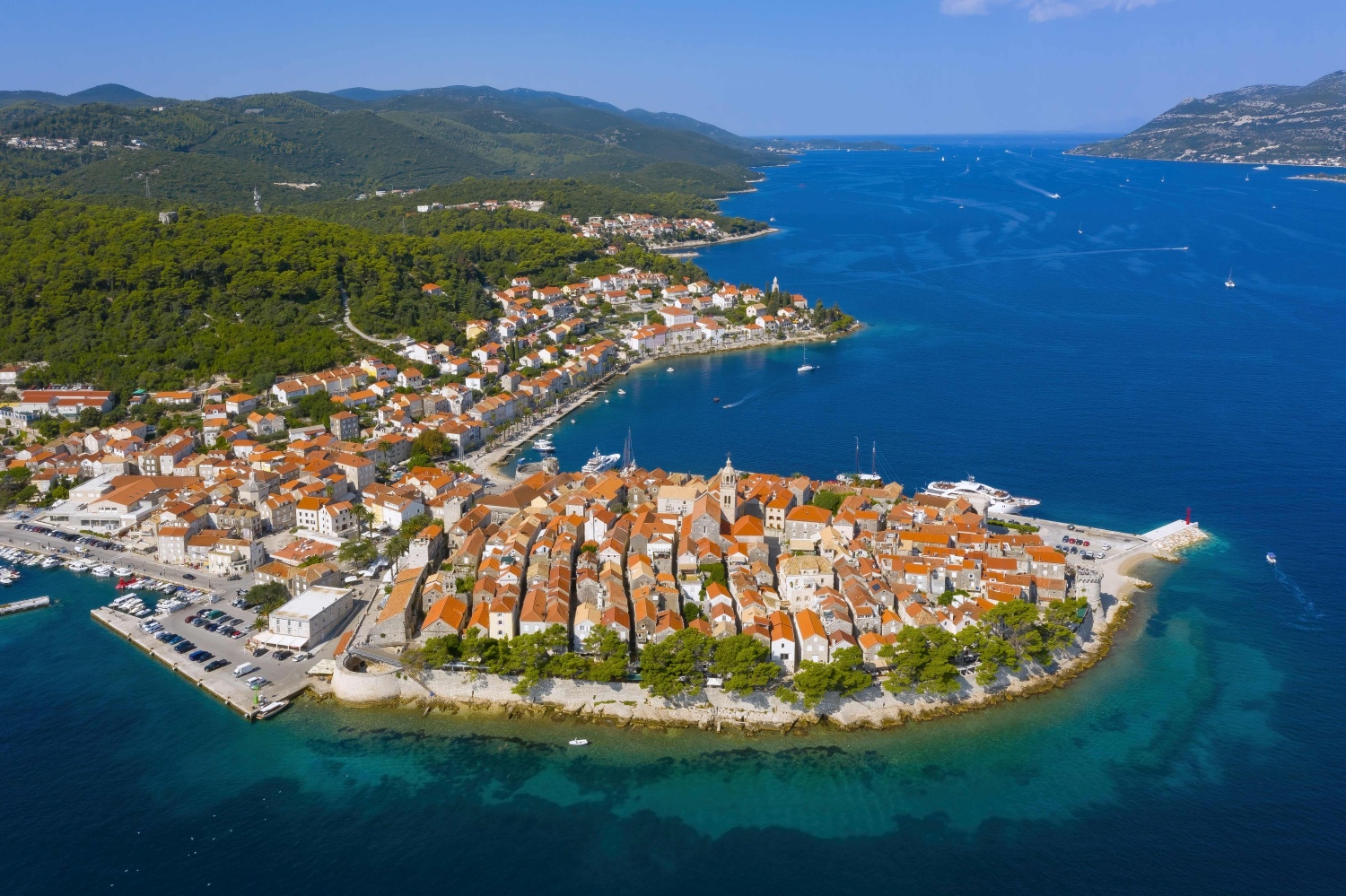
Korčula
Blessed with a mix of mild Mediterranean and almost subtropical climate, Korčula is warmer than any of the Dalmatian islands north of it. Korčula's scenic landscapes vary from the terraced olive gardens to fertile fields of white grape varieties of pošip and grk, pristine waters in the secluded bays and charming island places of Lumbarda, Smokvica, Blato and Vela Luka as well as the medieval old town of Korčula - the birthplace of explorer Marco Polo - and one of the best-preserved medieval Mediterranean towns.
The old quarter of Korčula town, huddled on a small peninsula, is surrounded by walls, and the streets are arranged in a herringbone pattern allowing free circulation of air but protecting against strong winds. The historic old town roster of heritage sites include the central Gothic and Renaissance Cathedral of St Mark, the Town Hall and the massive city fortifications.
Here you can hike and bike the various island trails or go sea kayaking in crystal-clear water around scattered little islands with an option to go snorkelling or diving. You can go rock climbing in an ambience of green fields and old villages or take advantage of the breezes in the strait of Peljesac to sail or try wind and kite surfing.
The island offers tailor-made activities and a large number of excursions. It's also a great base to explore nearby Pelješac peninsula, famous for its red wines, and the inspiring island of Mljet and its National Park.
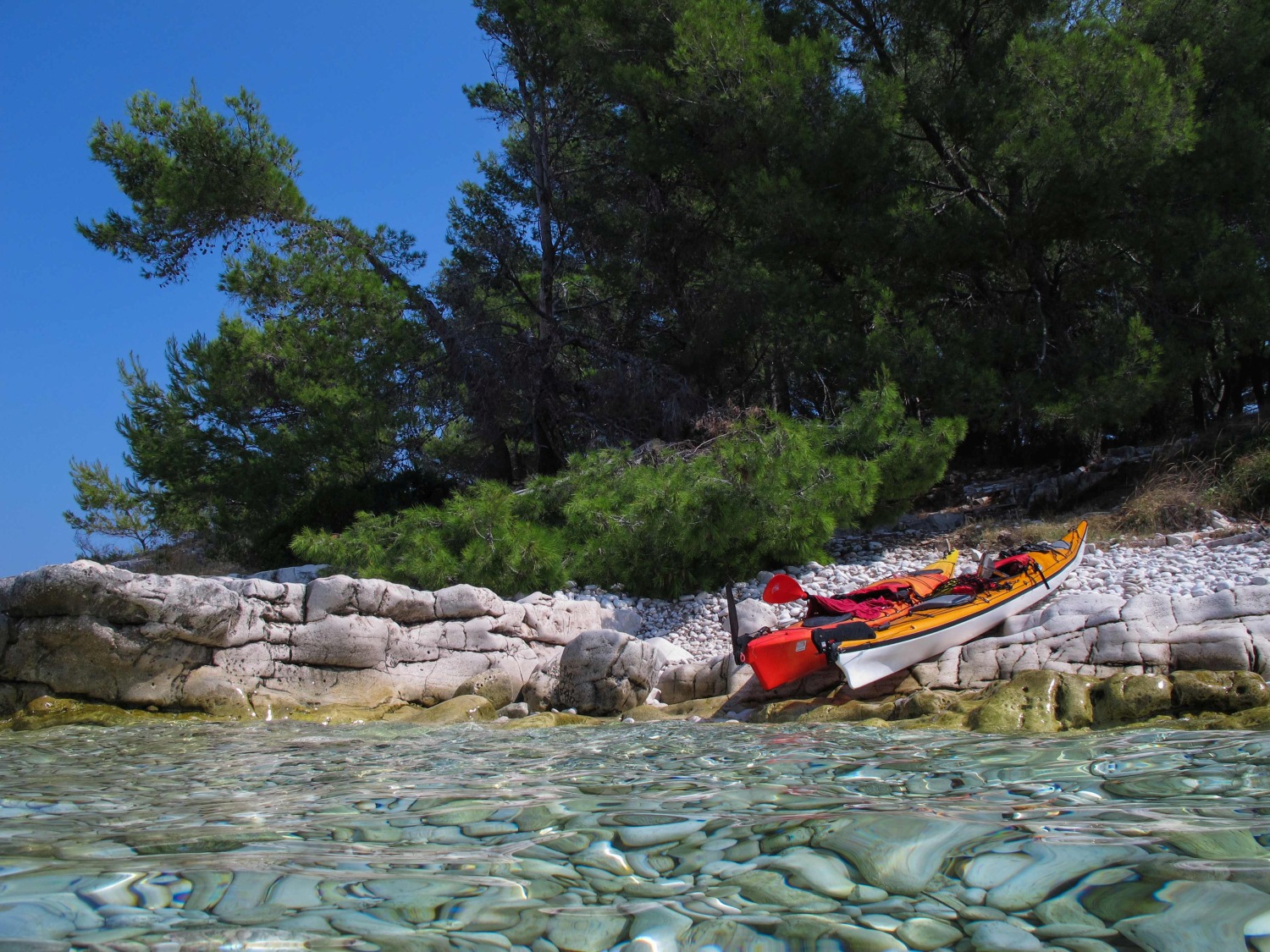
A network of paths crosses the island of Korčula, creating a pattern of routes through olive groves and vineyards, fragrant landscapes suitable for walking and cycling.
As well as a network of bike routes exploring different parts of Korčula, such as Vela Luka and Blato, one highlight is to take on the Great Island Bike Challenge, a 131km circuit, on a mix of asphalt and gravel roads, that visits every corner of the island, including Vela Spila, an archaeological site more than 20,000 years old. The route passes through vineyards, olive groves and pine forests, inland to the plains and hills and along the coastline to beaches and bays and through many villages and towns. It's a wonderful way to get to know the island.
Korčula is also a favourite stopover for sailors, with marinas at the old town and Vela Luka as well as many safe anchorages
More than just a summer destination, the islands are great to visit in the spring and autumn too. If you're taking a trip to Korčula in September, visiting the Vela Luka Outdoors Festival is a must, offering MTB and trail races, a kids' race, concert, and after party on the beach. In the spring, a mid-distance triathlon, the Marco Polo Challenge, also takes place on the island.
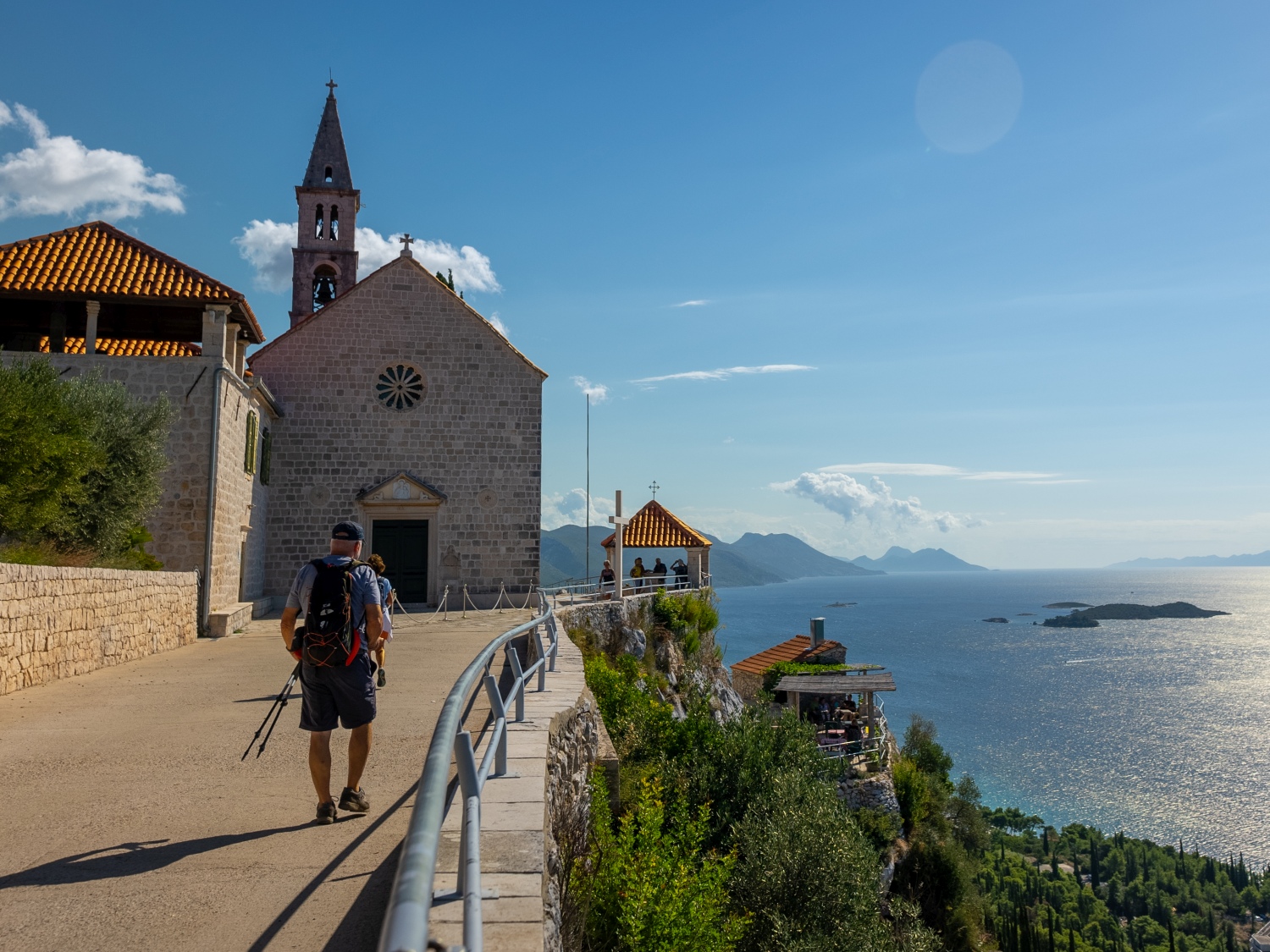
Pelješac
Directly opposite Korčula is the Pelješac peninsula. This long, thin strip has the feel and vibe of an island despite being connected to the mainland.
Don't be fooled by the tranquillity of this place; the Pelješac peninsula is perfect for swimming and sunbathing, or for hiking along marked paths, cycling, walking by the sea, or a wine tour to the famous wineries and wine cellars - a wine route, known as The Wine Empire, takes in 32 wineries, 13 tasting rooms and countless other wine-related attractions.
The old towns of the settlements of Ston, Janjina and Orebić on Pelješac date back to the 14th, 15the and 16th centuries respectively and are all worth visiting. Trpanj, the area on the northern shore of the peninsula, is ideal for hiking and biking and its gentle Olive Oil Trails are fascinating. Hikers wanting a more serious challenge should walk the 15km road leading to the bays of Divna and Duba. The road passes next to beautiful vineyards of Donja and Gornja Vručica, a breathtaking chasm above the magnificent beach at Divna, untouched waterside, olive trees and Mediterranean vegetation.
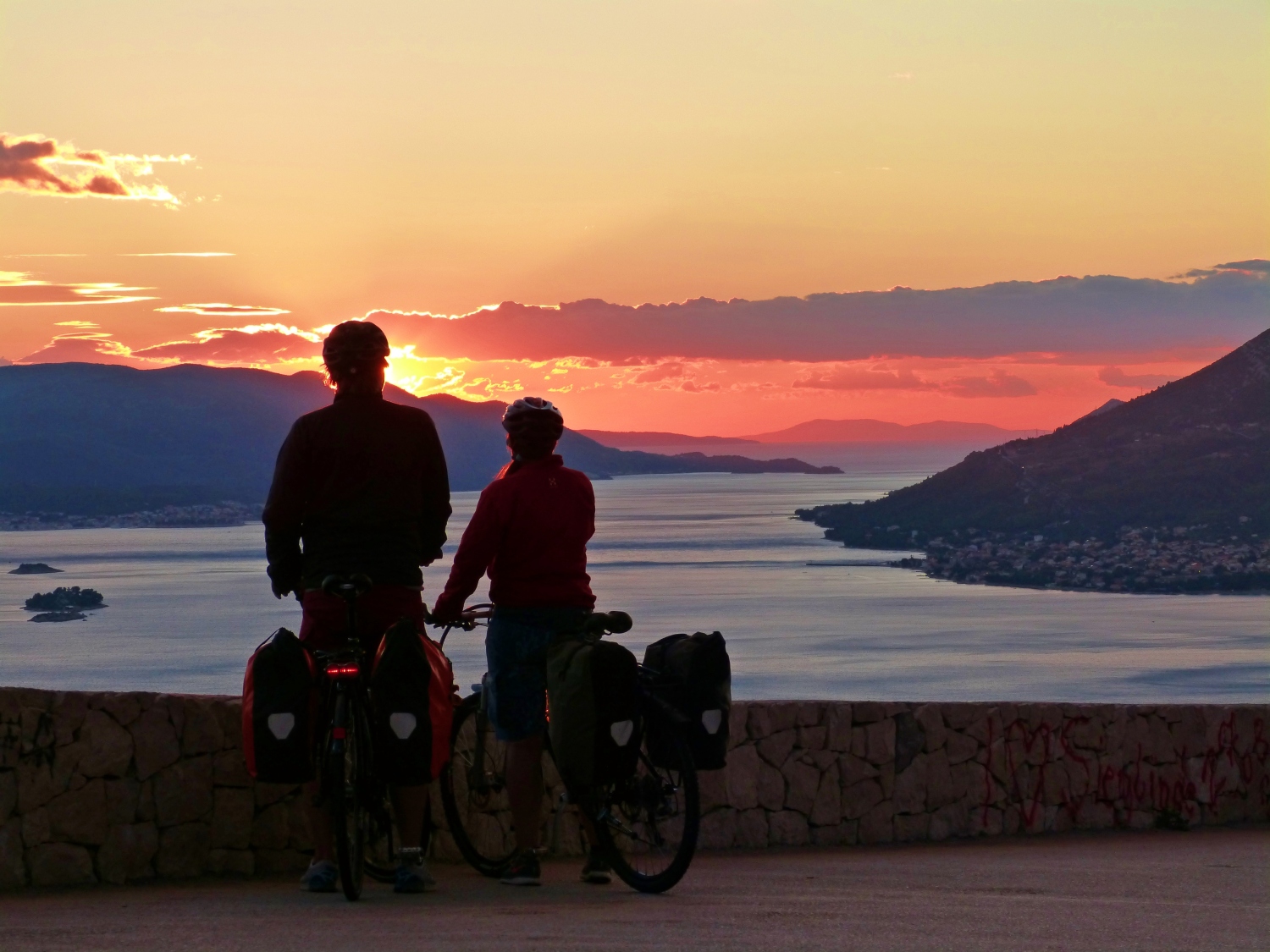
Walkers can also choose from four routes to the highest peak of St Elijah 961m above Orebić. Pelješac’s most famous hiking destination is also the greatest challenge for hikers. The view from the top is truly spectacular, with the islands of Korčula, Brač, Hvar, Vis, Mljet laid out before you. On clear days, you can even see the outlines of Italy. On the other side – the Neretva River, and the mountains of Biokovo and Mosor.
The peninsula has five mountain bike circular trails, covering 184km, that take you to hidden coves, beautiful beaches, taverns, olive groves and vineyards. From Orebić, the main town on the southern side of the peninsula, you have two well-maintained trails (1 and 5), and if you like mysterious places, try taking the Kuna Pelješka-Janjina-Trpanj-Oskorušno-Kuna route (2). If you wish, you can also take the section of the old Napoleon Road connecting Ston and Putnikovići. EuroVelo 8, also known as the Mediterranean route, passes through the Pelješac area as well.
On the water, windsurfers will relish the chance to test their skills in the Mistral winds blowing through the Pelješac channel.
Other fascinating sights include The Ston saltworks - the oldest and largest preserved saltworks in the Mediterranean - and the Maritime Museum in Orebić, which is the most important on the peninsula. On the hill above Orebić, sits the Franciscan monastery museum with votive paintings of sailors and their families. In the monastery, visit the church and the scenic viewpoint of Our Lady of Angels.

Mljet
The most beautiful and most forested island in the Adriatic. Mljet National Park - the oldest in the adriatic region - makes up most of the island, and there are several villages, two saltwater lakes - Veliko and Malo jezero - and a Benedictine monastery on the islet of sv. Marija [St Mary]. In Polače there are some of the best natural anchorages in the Adriatic.
Preserved from the Illyrian period, there are many fortifications and tombs, and the best preserved are those on the hill of Veliki Gradac, Veliko Jezero and the fortress at Vodice, above the water source at Vodice at Babino Polje. The Roman Palace, which is the largest after Diocletian’s Palace in Split and the Arena in Pula, is a part of the valuable heritage of the island of Mljet. the island is said to be the famed Ogygia, the island mentioned in Homer's Odyssey, where Odysseus was seduced by the nymph Calypso. A visit to the cave of Odysseus is a must for lovers of myth.
Popular activities on the island are biking, kayaking, scuba diving and exploring the many caves. Mljet is especially rich in underwater life that can be seen in its exceptional dive sites, underwater caves and sunken walls. The many amphora on the sea bed is evidence that Mljet lay on important maritime routes of ancient Greek galleys. The legendary Jacques Cousteau called it one of the best diving destinations in the world!

But the best way to appreciate Mljet's unspoilt nature, its mysticism, olive groves, vineyards and rich forests is simply to walk the island's network of 'recreational trails'.
Highlights of these include:
Trail A: Pomena to Pomena
A moderately-demanding marked 8.7km loop around Mljet's two beautiful lakes - the Great Lake and the Small Lake. The trail also crosses the Great Bridge where the sea and lakes connect.
Find more information about this route here.
Trail B: Polače to Polače
A slightly longer circuit walk at 12.2km - but with no real climbing - that is centred on the island's Great Lake. The trail follows the shoreline and includes the Roman palace remains and a ferry ride to the islet of St Mary's with its Benedictine monastery.
Find more information about this route here.
For mountain bikers, many of these trails also have their own - longer - MTB versions that also include a demanding 18.5 route from Blato to Vrbovica.
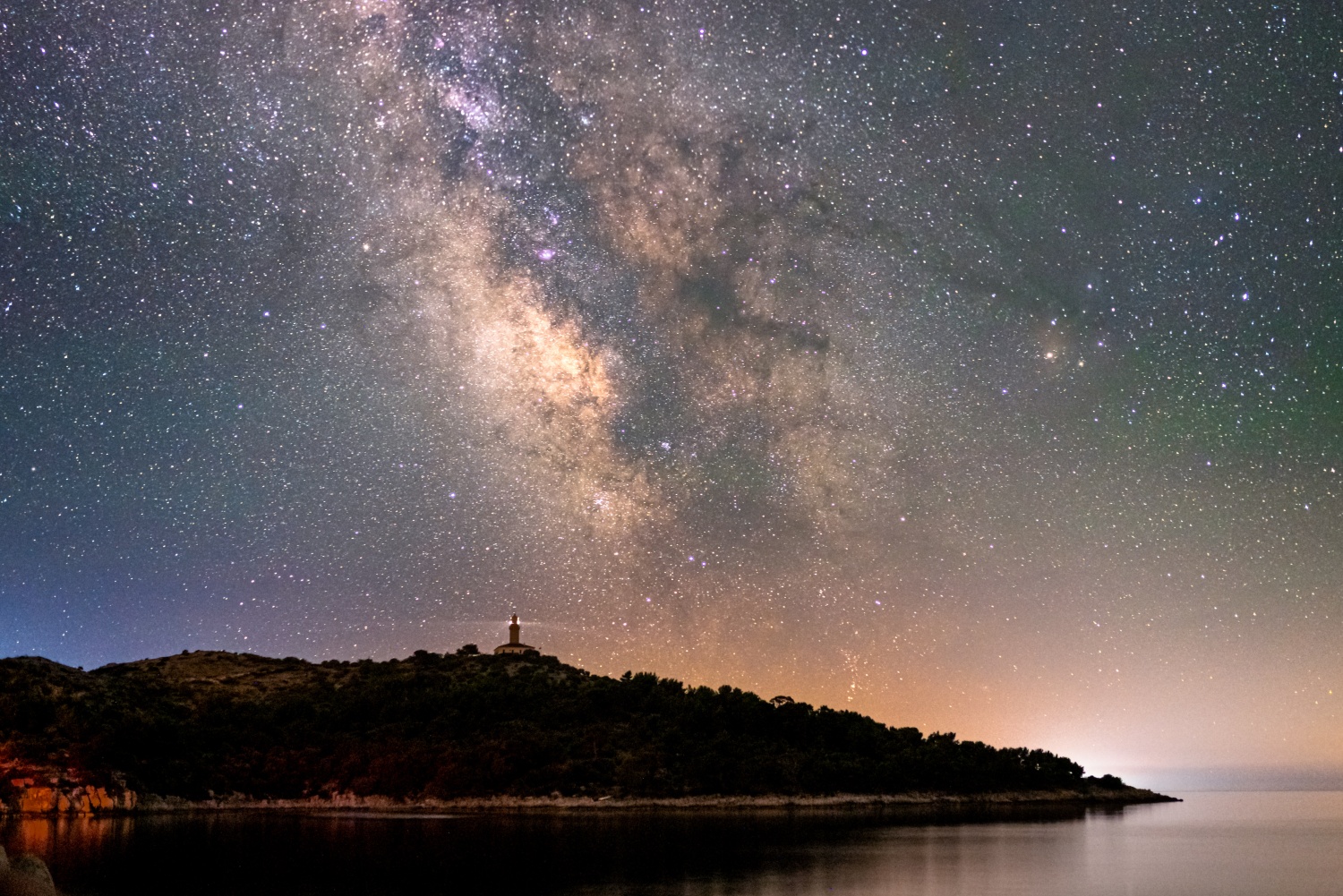
Lastovo
Known as the Island of Bright Stars, the tiny isle of Lastovo is a magical place. One of the least light-polluted destinations in the world, it's a phenomenal place to spend a night stargazing. the night sky from the summit of Mount Hum, the island's highest point, is deemed by scientists to be darkest in Europe - all visible stars of the Milky Way can be counted in a spectacular panorama of 219 million stars!
Lastovo Village is an old medieval town with a long and interesting history, surrounded by mountains and forming the shape of a natural amphitheatre. Lastovo preserves beautiful family houses from the 15th and 16 century. They are decorated with cylindrical chimneys that the locals call 'fumari' and with high broad terraces 'Lastovski sulari' which have become a trademark of Lastovo.
Apart from its natural and cultural treasures - including many old churches and the 500-year-old tradition of carnival (Mardi Gras), declared a UNICEF non-material cultural asset - Lastovo is renowned for its gastronomy, including grilled sardines on a spit, a fish stew and praline and biscuit desserts, and rose brandy.
The archipelago of Lastovo is dotted with beautiful coves, making this a favourite spot for sailors indulging in an island hopping tour - the coves of Zaklopatica, on the north coast, and Skrivena Luka on the south coast, are among its most beautiful and offered wonderfully sheltered anchorages.
Walking is a great way to see the island - there are 200 marked paths supervised by the Lastovsko Otocje's Nature Park rangers. Cycling too is a popular way to get around - forest paths and asphalted cycle routes criss-cross the island.
The many undersea caves and archaeological sites of sunken galleys filled with amphorae and other ancient artefacts also make Lastovo a superb diving destination.
For more information about visiting this fantastic area, go to visitdubrovnik.hr












